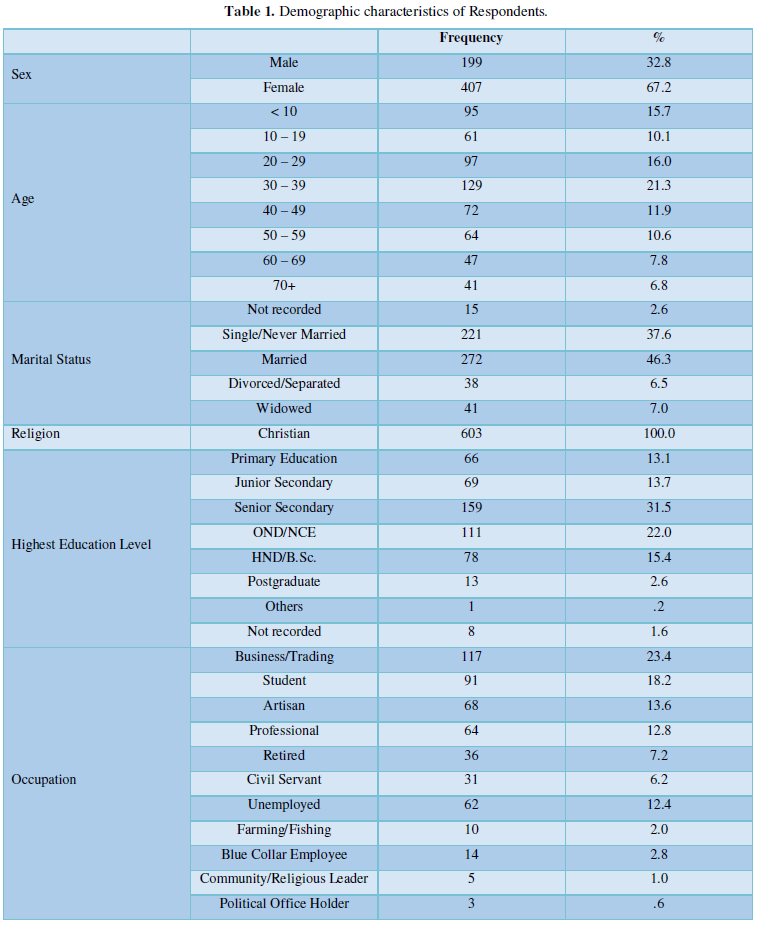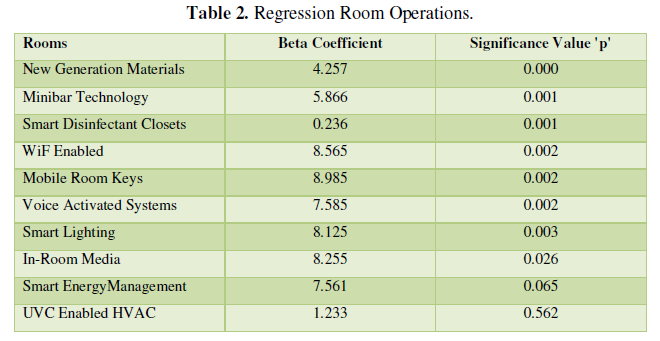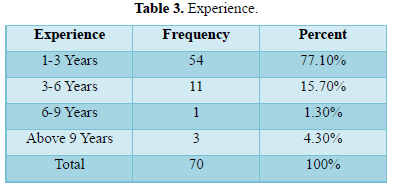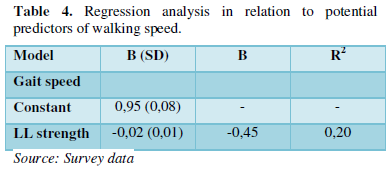2905
Views & Citations1905
Likes & Shares
The objective of the present study was to determine effect of dietary inclusion of (Zingier Officinal) and garlic (Allium sativum) oil mixture (GIGM) on the growth performance and caecal microbial population of broiler chickens. One hundred and fifty-one-day-old broiler chicks (Ross 308) were randomly allocated into 5 treatments with three replicates consisting of 10 birds each in a completely randomized design. Birds in treatment 1 (T1) was fed basal diet with 0 % inclusion of GIGM while T2, T3, T4 and T5 were given 0.1 %, 0.2 %, 0.3 % and 0.4 % respectively. Clean feed and water were offered ad libitum and all other management practices were strictly observed throughout the experiment which lasted for 56 days. Results obtained were used to determine weight gain (WG), average daily weight gain (ADWG), total feed intake (TFI), average daily feed intake (ADFI), feed conversion ratio (FCR) and microbial population of E. coli, Salmonella spp and Lactobacillus spp. ADWG, ADFI and FCR were significantly (P ˂ 0.05) influenced by the dietary inclusion of GIGM. ADWG were highest in T5 (47.80 g), T4 (45.75 g) and T3 (45.09 g), intermediate in T2 (39.59 g) and lowest in T1 (30.72 g). Lactobacillus spp increased as the level of dietary inclusion of GIGM increases (P ˂ 0.05). E. coli and Salmonella spp counts were significantly (P ˂ 0.05) different among the treatments. It was concluded that GIGM could be included in the diet of broilers up to 0.4 % without causing any deleterious effect on the performance and health of birds.
MATERIALS AND METHODS
Sourcing and extraction of oil
Experimental Animals and their management
Diet formulation

Performance parameters

On the 56th day of the experiment, 6 birds were randomly selected per treatment for caecal microbial enumeration (E. coli, Salmonella spp and Lactobacillus spp). A 10-fold serial dilution method was used in which 1% peptone solution was mixed with caecal samples and poured unto agar plates (Model R4-02X, Punjab, India) and incubated at 37°C for 48 h. Visible colonies were enumerated using colony counter and the results were expressed as log10 CFU/g of caecal digesta.
Phytochemical analysis
Statistical analysis
RESULTS
Phytochemical composition of ginger (Zingiber officinale) and garlic (Allium sativum) oil


Caecal microbial population of broiler chicks fed diets with different level of GIGM is presented in Table 4. Microbial population of E. coli, Lactobacillus spp and Salmonella spp ranged from 20.12 - 34.98 (log10CFU/g), 15.40 - 30.44 (log10CFU/g) and 18.20 - 29.09 (log10CFU/g). E. coli and Salmonella spp values were highest in T1 relative to other treatments (P˂0.05) contrary to Lactobacillus spp count where T5 was highest, T2, T3, T4 followed similar trend and lowest in T1 (P˂0.05).

DISCUSSION
The pharmacological importance of EOs is primarily due to bioactive chemicals in plant tissues as primary and secondary metabolites [17]. These constituents have several therapeutic properties for instance terpenoids possess anticarcinogenic, antimalarial, anti-ulcer, antimicrobial or diuretic activity [18,19]. Flavonoids in plants possess medicinal benefits which includes antioxidant and anti-inflammatory activities [20,21]. They have the ability to scavenge hydroxyl radicals, super oxide anions and lipid peroxy radicals [22]. Alkaloids perform antimalarial, antimicrobial, antioxidant and protection of plants from pathogens [23]. Phenolic compounds show a wide range of pharmacological activities including anticancer, anti-inflammatory and prevention of cardiovascular diseases [24].
CONCLUSION
- Singh AS, Alagbe JO, Sharma S, Oluwafemi RA, Agubosi OCP (2021) Effect of dietary supplementation of melon (Citrallus linatus) seed oil on the growth performance and antioxidant status of growing rabbits. J Multidimension Res Rev 2(1): 78-95.
- Adewale AO, Alagbe JO, Adekemi AO (2021) Dietary Supplementation of Rauvolfia Vomitoria Root Extract as A Phytogenic Feed Additive in Growing Rabbit Diets: Hematology and serum biochemical indices. Int J Orange Technol 3(3): 1-12.
- Musa B, Alagbe JO, Betty AM, Omokore EA (2020) Growth performance, caeca microbial population and immune response of broiler chicks fed aqueous extract of Balanites aegyptiaca and Alchornea cordifolia stem bark mixture. United J Res Technol 2(2): 13-21.
- Michiels J, Missotten J, Dierick N, De Smet S (2005) In vitro effect of botanicals on gut flora of pigs. 30ste Studiedag van de Nederlandstalige Voedingsonderzoekers Merelbeke. pp: 67-68.
- Charles R, Garg SN, Kumar S (2000) New gingerdione from the rhizomes of Zingiber officinale. Fitolerapia 71: 716-718.
- Chang KJ, Cheong SH (2008) Volatile organosulphur and nutrient compounds from garlic by cultivating areas and processing methods. Fed Am Soc Exp Bio J 22: 1108-1112.
- Alagbe JO, Oluwafemi RA (2019) Performance and hematological parameters of broiler chicks gives different levels of dried lemon grass (Cymbopogon citratus) and garlic (Allium sativum) extract. Res Agric Vet Sci 3(2): 102-111.
- Cheng S, Liu JY, Cheng EH, Cheng ST (2008) Antifungal activity of cinnamaldehyde and eugenol congeners against wood rots fungi. Bioresour Technol 99: 5145-5149.
- Demir E, Sarica S, Ozcan MA, Suicmez M (2003) The use of natural feed additives as alternatives for an antibiotic growth Promoter in broiler diets. Braz J Poult Sci 44: 44-45.
- Olafadehan OA, Oluwafemi RA, Alagbe JO (2020) Carcass quality, nutrient retention and caeca microbial population of broiler chicks administered Rolfe (Daniellia oliveri) leaf extract as an antibiotic alternative. J Drug Discov 14(33): 146-154.
- Dormans HJ, Deans SG (2000) Antimicrobial agents from plants: Antibacterial activity of plant volatile oils. J Appl Microbiol 88: 308-316.
- Burt S (2004) Essential oils: Their antibacterial properties and potential applications in food- A review. Int J Food Microbiol 94: 943-947.
- Oluwafemi RA, Uankhoba IP, Alagbe JO (2021) Effects of turmeric oil as a dietary supplement on the growth performance and carcass characteristics of broiler chicken. Int J Orange Technol 3(4): 1-9.
- Balogun O (2001) The Federal Capital Territory of Nigeria: Geography of Its Development. University of Ibadan Press Limited.
- Harborne JD (1973) Phytochemical methods: A guide to modern techniques of plant analysis. Chapman and Hall, London. pp: 279.
- Odebiyi A, Sofowora AE (1978) Phytochemical Screening of Nigerian Medicinal Plant. Part III, Lloydia, 41: 234-246.
- Shittu MD, Alagbe JO (2020) Phyto-nutritional profiles of broom weed (Sida acuta) leaf extract. Int J Integr Educ 3(11): 119-124.
- Dudareva N, Pichersky E, Gershenzon J (2004) Biochemistry of plant volatiles. Plant Physiol 135: 1893-1902.
- Krishnaiah D, Sarbatly R, Bono A (2007) Phytochemical antioxidants for health and medicine: A move towards nature. J Biomed Sci 1(3): 97-104.
- Saxena M, Saxena J, Nema R, Singh D, Gupta A (2013) Phytochemistry of Medicinal Plants. J Pharmacogn Phytochem 8192(1): 168-182.
- Ojewuyi OB, Ajiboye TO, Adebanjo EO, Balogun A, Mohammed AO (2014) Proximate composition, phytochemical and mineral contents of young and mature Polyalthia longifolia leaves. Fountain J Nat Appl Sci 3(1): 10-19.
- Okwu DE (2004) Phytochemical and vitamin content of indigenous spices of South Eastern Nigeria. J Sustain Agric Environ 6: 30-37.
- Cushnie TPT, Cushnie B, Lamb AJ (2014) Alkaloids: An overview of their antibacterial antibiotic enhancing and anti-virulence activities. Int J Phytochem 44(5): 377-386.
- Li S, Li RY, Gan FL, Li HB (2013) Antioxidant capacities and total phenolic contents of infusions from 233 medicinal plants. Ind Crop Prod 51: 289-298.
- Alagbe J, Oluwafemi RA (2019) Growth performance of weaner rabbits fed noni (Morinda citrifolia) and Moringa olifera leaf mixture as partial replacement for soya bean meal. Int J Adv Biol Biomed Res 7(2): 185-195.
- Michiels J, Missotten J, Dierick N, De Smet S (2005) In vivo degradation and in vivo passage kinetics of carvacol, thymol, eugenol and trans-cinnamaldehyde along the gastrointestinal tracts of piglets. J Food Agric 88: 2371-2381.
- Dierick N, Michiels J, Van NC (2004) Effect of medium chain fatty acids and benzoic acid as alternative for antibiotics on growth and some gut parameters in piglets. Commun Agric Appl Biol Sci 69(2): 187-190.
QUICK LINKS
- SUBMIT MANUSCRIPT
- RECOMMEND THE JOURNAL
-
SUBSCRIBE FOR ALERTS
RELATED JOURNALS
- Journal of Agriculture and Forest Meteorology Research (ISSN:2642-0449)
- Journal of Astronomy and Space Research
- Journal of Womens Health and Safety Research (ISSN:2577-1388)
- Proteomics and Bioinformatics (ISSN:2641-7561)
- Journal of Genetics and Cell Biology (ISSN:2639-3360)
- Food and Nutrition-Current Research (ISSN:2638-1095)
- Journal of Veterinary and Marine Sciences (ISSN: 2689-7830)

